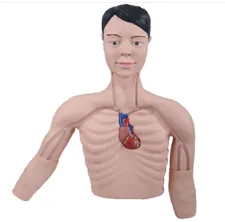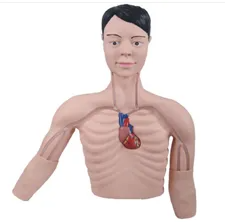In the modern medical field, PICC technology is widely used in clinical treatment because of its unique advantages. However, the implementation of this technology has extremely high requirements for the operational skills of medical personnel, and many beginners often feel unfamiliar and confused when facing the catheterization operation. In order to solve this problem, PICC interventional training model came into being, which has become an important bridge from the "unfamiliar" stage of tube operation to the "skilled" stage.
A highly simulated design was adopted to simulate the vascular structure and anatomical characteristics of real human body. This design not only makes the model similar to the real human body in appearance, but more importantly, it also restores the real tube experience as much as possible in terms of internal structure and touch. During the simulation training, medical staff can clearly feel the direction of blood vessels, depth and various details in the catheterization process. This intuitive operating experience greatly improves their understanding and mastery of the catheterization operation.

Through repeated practice, medical staff can gradually familiarize themselves with and master various techniques in the catheterization process, such as the selection of puncture points, the Angle and depth of injection, and the pushing and fixing of the catheter. The mastery of these techniques not only helps to improve the accuracy and safety of the catheterization operation, but also to deal with various complex situations in the actual combat to ensure the safety and comfort of patients.
More importantly, through the simulation training of the PICC intervention training model, the medical staff can practice the catheterization operation without actual patient risk, which greatly reduces the risk in the actual operation. At the same time, simulation training can also help health care workers better understand the possible complications and risks during the catheterization process, and learn how to effectively respond and deal with them.
In summary, PICC interventional training model provides a safe and effective training platform for medical personnel through the advantages of highly simulated design, adjustable difficulty and simulation scenario of catheterization, and reducing actual operation risk. It allows the catheterization operation from "unfamiliar" to "skilled", not only improves the catheterization skill level of medical staff, but also provides a strong guarantee for the safety and comfort of patients.

